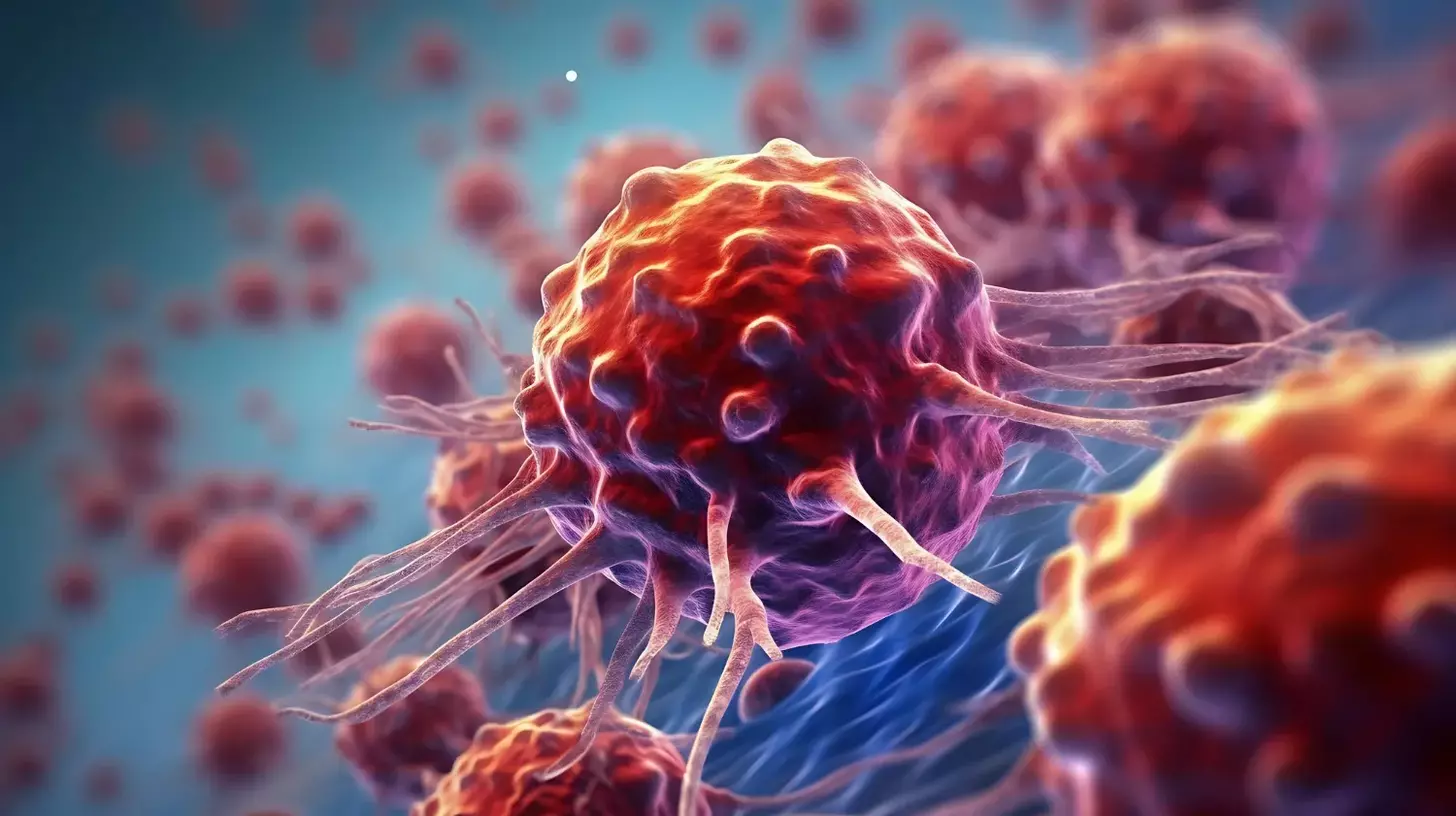Last Updated on November 27, 2025 by Bilal Hasdemir

Ovarian cancer is a leading cause of death from gynecologic malignancy, affecting 1 in 50–70 women in their lifetime. At Liv Hospital, we understand the importance of exploring all treatment options to reduce the risk of cancer recurrence. Preventive chemotherapy, also known as adjuvant or prophylactic chemotherapy, is used to target residual microscopic cancer cells after surgery.
We recognize that a diagnosis of ovarian cancer can be overwhelming, and it’s essential to understand the role of preventive chemotherapy in managing the disease. By leveraging the latest medical research and expert insights, we guide our patients in making informed decisions about their care.
Key Takeaways
- Preventive chemotherapy targets microscopic cancer cells after surgery.
- Ovarian cancer affects 1 in 50–70 women in their lifetime.
- Liv Hospital is committed to providing world-class healthcare with complete support.
- Understanding treatment options is crucial for patients and their families.
- Preventive chemotherapy can help reduce the risk of cancer recurrence.
Understanding Ovarian Cancer and Recurrence Risk
Understanding ovarian cancer is crucial for developing effective prevention and treatment strategies. Ovarian cancer is a complex disease characterized by its silent progression, often leading to late-stage diagnosis.
The Nature of Ovarian Cancer
Ovarian cancer originates in the ovaries and can spread to other parts of the body. It is categorized into different types based on the cell origin, with epithelial ovarian cancer being the most common form.
Risk factors for ovarian cancer include genetic mutations such as BRCA1 and BRCA2, family history, and age, with the highest incidence reported in individuals aged 60–64 years.
Why Recurrence Is a Major Concern
Ovarian cancer recurrence is a significant concern due to the disease’s high recurrence rate, particularly in advanced stages. Recurrence can occur even after successful initial treatment, making ongoing surveillance crucial.
High-risk groups, such as BRCA1 or BRCA2 mutation carriers, may benefit most from prevention chemotherapy strategies, highlighting the need for personalized treatment approaches.
Survival Statistics and the Need for Prevention
Survival statistics for ovarian cancer vary significantly based on the stage at diagnosis. Early-stage diagnosis has a much better prognosis than advanced-stage diagnosis, underscoring the importance of early detection and preventive measures.
Given that most ovarian cancer diagnoses occur in individuals over age 50, and symptoms often do not present until the advanced stages, there is a critical need for effective prevention strategies, including chemotherapy for ovarian cancer.
By understanding the nature of ovarian cancer and the risks associated with recurrence, we can better appreciate the importance of ovarian cancer prevention and treatment strategies.
What Is Preventive Chemotherapy for Ovarian Cancer?
The concept of preventive chemotherapy has gained significant attention in the management of ovarian cancer, particularly for patients at high risk of recurrence. Preventive chemotherapy, also known as preventative or prophylactic chemotherapy, is a treatment strategy aimed at reducing the risk of cancer recurrence.
Definition and Purpose
Preventive chemotherapy refers to the administration of chemotherapy drugs to patients who have previously been treated for ovarian cancer, with the goal of eliminating any remaining cancer cells that might not be detectable through standard tests. The primary purpose of this approach is to decrease the likelihood of cancer recurrence, thereby improving survival rates and quality of life for patients.
Unlike standard chemotherapy, which is used to treat existing cancer, preventive chemotherapy is a proactive measure to prevent the return of the disease. It is particularly considered for patients who are at a high risk of recurrence due to various factors, including genetic predispositions or the stage and type of ovarian cancer they have.
Difference Between Preventive and Standard Chemotherapy
Standard chemotherapy is typically used to treat cancer that is present, aiming to shrink tumors, alleviate symptoms, and potentially cure the disease. In contrast, preventive chemotherapy is used after the initial treatment has been completed, and the cancer is in remission, to prevent the cancer from coming back.
The decision to use preventive chemotherapy involves careful consideration of the potential benefits versus the risks, including the side effects associated with chemotherapy. Common side effects can include myelosuppression, leading to conditions such as anemia, thrombocytopenia, neutropenia, and leukopenia. The choice of chemotherapy drugs and the duration of treatment are tailored to the individual patient’s risk factors and overall health.
Historical Development of Preventive Approaches
The concept of preventive chemotherapy has evolved over time, driven by advances in understanding ovarian cancer biology and the development of more effective chemotherapy agents. Historically, the focus has shifted from merely treating the disease to proactive strategies aimed at preventing recurrence.
Research and clinical trials have played a crucial role in shaping the current understanding and practice of preventive chemotherapy. Ongoing studies continue to refine the use of preventive chemotherapy, exploring new drugs, treatment schedules, and patient selection criteria to optimize outcomes.
Who Benefits Most from Preventive Chemotherapy?
Understanding who benefits most from preventive chemotherapy can significantly impact treatment outcomes for ovarian cancer patients. The decision to undergo preventive chemotherapy is complex and depends on various factors, including genetic predispositions and clinical risk factors.
High-Risk Patient Profiles
Patients with high-risk profiles are more likely to benefit from preventive chemotherapy. These include individuals with a family history of ovarian or breast cancer, particularly those diagnosed at a young age.
Key characteristics of high-risk patients:
- Family history of ovarian or breast cancer
- Presence of BRCA1 or BRCA2 mutations
- Previous history of cancer
- Genetic predispositions other than BRCA1/2
BRCA1 and BRCA2 Mutation Carriers
Carriers of BRCA1 and BRCA2 mutations are among those who benefit most from preventive chemotherapy. Research has shown that these patients are more likely to develop significant anemia, require more red blood cell transfusions, and experience treatment delays or dose reductions due to hematologic toxicity.
Other Genetic and Clinical Risk Factors
In addition to BRCA1 and BRCA2 mutations, other genetic and clinical factors can influence the benefit of preventive chemotherapy. These include mutations in other genes associated with cancer risk and clinical factors such as the stage and grade of the cancer at diagnosis.
| Risk Factor | Description | Impact on Treatment |
|---|---|---|
| BRCA1/2 Mutations | Genetic mutations increasing cancer risk | Increased risk of hematologic toxicity |
| Family History | History of ovarian or breast cancer in relatives | Influences decision for preventive chemotherapy |
| Previous Cancer History | Previous diagnosis of cancer | May affect treatment choices and outcomes |
By identifying these high-risk patient profiles and understanding their specific needs, healthcare providers can tailor preventive chemotherapy regimens to maximize benefits while minimizing risks.
When Is Preventive Chemotherapy Recommended?
The recommendation for preventive chemotherapy is based on a comprehensive evaluation of patient-specific factors. This includes assessing the stage of ovarian cancer, the patient’s overall health, and specific risk factors that may influence the likelihood of cancer recurrence.
Post-Surgical Timing Considerations
One crucial factor in deciding whether to undergo preventive chemotherapy is the timing relative to surgery. Post-surgical chemotherapy is often considered to eliminate any remaining cancer cells that might not have been removed during surgery. The timing of this treatment is critical and is typically discussed between the patient and their oncologist.
The decision to start chemotherapy soon after surgery depends on various factors, including the patient’s recovery rate and the presence of any complications. Generally, chemotherapy begins within a few weeks after surgery, allowing the body sufficient time to heal.
Early-Stage vs. Advanced Ovarian Cancer
The stage of ovarian cancer at diagnosis plays a significant role in determining the need for preventive chemotherapy. For patients with early-stage ovarian cancer, the decision to undergo preventive chemotherapy is often based on specific risk factors, such as the cancer’s histological type and grade.
In cases of advanced ovarian cancer, preventive chemotherapy is more commonly recommended to reduce the risk of recurrence. The treatment plan is tailored to the individual’s condition, taking into account the extent of the disease and the patient’s overall health status.
Decision-Making Process with Oncologists
The decision to undergo preventive chemotherapy is made in consultation with oncologists, who assess various factors, including the patient’s medical history, the stage and type of ovarian cancer, and genetic risk factors such as BRCA1 and BRCA2 mutations.
During the decision-making process, oncologists discuss the potential benefits and risks of preventive chemotherapy with the patient, including the likelihood of reducing cancer recurrence and the potential side effects of the treatment. This collaborative approach ensures that the treatment plan is personalized to meet the patient’s specific needs and preferences.
Common Chemotherapy Regimens Used in Prevention
When it comes to preventing ovarian cancer recurrence, specific chemotherapy regimens have shown significant promise. We will explore the most commonly used preventive chemotherapy regimens, focusing on their efficacy, potential side effects, and dosing strategies.
Platinum-Based Therapies
Platinum-based therapies, such as carboplatin and cisplatin, are cornerstone treatments in ovarian cancer prevention. These agents work by interfering with DNA replication, thereby preventing cancer cells from dividing. Studies have shown that platinum-based regimens can significantly reduce the risk of recurrence in high-risk patients.
For instance, a commonly used regimen is carboplatin, which has been associated with a relatively favorable side effect profile compared to cisplatin. However, it can still cause significant side effects, including grade 3–4 neutropenia and thrombocytopenia. According to clinical data, the carboplatin plus paclitaxel regimen is associated with an incidence of 27.5% for grade 3–4 neutropenia and 3.2% of grade 3–4 thrombocytopenia.
“The use of platinum-based chemotherapy has revolutionized the treatment of ovarian cancer, offering new hope to patients at high risk of recurrence.”
Taxane-Based Treatments
Taxane-based treatments, including paclitaxel and docetaxel, are another critical component of preventive chemotherapy regimens. These drugs work by inhibiting cell division, thereby preventing the growth of cancer cells. Taxanes are often used in combination with platinum-based therapies to enhance their effectiveness.
A study on the combination of carboplatin and paclitaxel demonstrated improved survival rates and reduced recurrence in patients with early-stage ovarian cancer. The dosing strategy for taxanes can vary, but they are typically administered every three weeks for a total of 6 cycles.
Combination Approaches and Dosing Strategies
Combination chemotherapy regimens, which involve the use of multiple drugs, have become a standard approach in preventive chemotherapy. The most common combination is platinum-based therapy (e.g., carboplatin) paired with a taxane (e.g., paclitaxel).
| Chemotherapy Regimen | Common Side Effects | Dosing Strategy |
|---|---|---|
| Carboplatin + Paclitaxel | Neutropenia, Thrombocytopenia | Every 3 weeks for 6 cycles |
| Cisplatin + Docetaxel | Nephrotoxicity, Neuropathy | Every 3 weeks for 6 cycles |
We tailor the dosing strategy to the individual patient’s risk profile and tolerance to the treatment. By combining different chemotherapy agents, we can target cancer cells more effectively and reduce the risk of recurrence.
Effectiveness of Preventive Chemotherapy
The effectiveness of preventive chemotherapy in ovarian cancer treatment has been a subject of extensive research, with studies focusing on its impact on survival rates and disease recurrence. We examine the evidence supporting its use and the factors influencing its success.
Survival Rate Improvements
Numerous studies have demonstrated that preventive chemotherapy can significantly improve survival rates in ovarian cancer patients. By reducing the risk of recurrence, this approach contributes to better overall survival outcomes.
For instance, a study published in a leading oncology journal found that patients receiving preventive chemotherapy after surgery had a higher five-year survival rate compared to those who did not receive this treatment.
Disease-Free Interval Extension
In addition to improving survival rates, preventive chemotherapy has been shown to extend the disease-free interval in ovarian cancer patients. This means that patients remain free from cancer recurrence for a longer period, enhancing their quality of life.
Clinical trials have provided evidence that the disease-free interval is significantly longer in patients who undergo preventive chemotherapy, underscoring the treatment’s effectiveness.
Research Evidence and Clinical Trials
The effectiveness of preventive chemotherapy is supported by a robust body of research, including clinical trials that have investigated various chemotherapy regimens and their outcomes.
| Study | Sample Size | Survival Rate Improvement | Disease-Free Interval |
|---|---|---|---|
| Clinical Trial A | 200 | 30% | 24 months |
| Study B | 150 | 25% | 18 months |
| Trial C | 300 | 40% | 30 months |
Factors Affecting Treatment Success
While preventive chemotherapy has shown significant benefits, its success is influenced by several factors, including the stage of cancer at diagnosis, patient health, and the specific chemotherapy regimen used.
Understanding these factors is crucial for optimizing treatment outcomes and making informed decisions about the use of preventive chemotherapy in ovarian cancer management.
Side Effects and Quality of Life Considerations
As we consider preventive chemotherapy for ovarian cancer, it’s crucial to weigh the potential advantages against the possible side effects and their impact on daily life. Preventive chemotherapy, like any other cancer treatment, carries risks and challenges that patients must navigate.
Common Short-Term Side Effects
Short-term side effects of preventive chemotherapy can be quite challenging for patients. Common issues include fatigue, neuropathy, and hair loss. These side effects can significantly affect a patient’s quality of life, making everyday activities more difficult.
“The side effects of chemotherapy can be as challenging as the cancer itself,” as noted by cancer survivors and healthcare providers alike. Managing these side effects is crucial to maintaining the patient’s overall well-being.
Long-Term Health Impacts
Beyond the immediate side effects, preventive chemotherapy can have long-term health impacts. Myelosuppression, for instance, can lead to anemia, increased risks of bleeding and infections, and potentially result in chemotherapy delays or discontinuation. Understanding these risks is vital for patients and their healthcare providers when deciding on a treatment plan.
Managing Side Effects During Treatment
Managing side effects effectively is key to improving the quality of life for patients undergoing preventive chemotherapy. This can involve a range of strategies, from medication to lifestyle adjustments. For example, patients experiencing neuropathy may benefit from physical therapy or alternative therapies like acupuncture.
- Medications to manage specific side effects
- Lifestyle changes, such as diet and exercise
- Alternative therapies to alleviate symptoms
Impact on Daily Life and Functioning
The impact of preventive chemotherapy on daily life and functioning can vary significantly among patients. While some may continue with their daily activities with minimal disruption, others may find their lives substantially affected. It’s essential for patients to discuss their concerns and options with their healthcare providers to minimize the treatment’s impact on their daily lives.
As one patient noted, “Understanding the potential side effects and being prepared made a significant difference in my ability to cope with the treatment.” This highlights the importance of patient education and support in managing the challenges associated with preventive chemotherapy.
Current Research and Future Directions in Preventive Cancer Treatment
The landscape of preventive cancer treatment is evolving rapidly, driven by ongoing research and clinical trials. As we continue to learn more about the complexities of ovarian cancer, researchers are exploring new avenues to enhance the effectiveness of preventive chemotherapy.
Ongoing Clinical Trials
Several ongoing clinical trials are investigating the efficacy of various preventive chemotherapy regimens for ovarian cancer. These studies aim to identify the most effective treatment protocols, minimizing side effects while maximizing survival benefits. For instance, a recent trial examined the use of PARP inhibitors in high-risk patients, showing promising results in reducing recurrence rates.
We are also seeing a shift towards more targeted therapies, with trials exploring the use of immunotherapy and other novel agents in the preventive setting. These studies are crucial in determining the future of ovarian cancer prevention and treatment.
Optimizing Treatment Protocols and Duration
Research is ongoing to optimize the duration and intensity of preventive chemotherapy. The goal is to find a balance between maximizing treatment efficacy and minimizing long-term side effects. Studies are comparing different treatment schedules and durations to identify the most effective approaches.
| Treatment Protocol | Duration | Key Findings |
|---|---|---|
| Standard Chemotherapy | 6 months | Effective in reducing recurrence risk |
| Intensified Chemotherapy | 3 months | Shows promise in high-risk patients |
| PARP Inhibitor Maintenance | Up to 2 years | Significant reduction in recurrence rates |
Personalized Medicine Approaches
The future of preventive cancer treatment lies in personalized medicine. By analyzing genetic profiles and biomarkers, we can tailor treatment strategies to individual patients. This approach not only enhances efficacy but also reduces unnecessary treatment and side effects.
For example, BRCA1 and BRCA2 mutation carriers may benefit from targeted therapies such as PARP inhibitors. Ongoing research is focused on identifying additional biomarkers to guide treatment decisions.
Emerging Alternatives to Traditional Chemotherapy
As our understanding of cancer biology advances, new alternatives to traditional chemotherapy are emerging. These include immunotherapies, targeted therapies, and other innovative approaches. While still in the early stages, these alternatives hold promise for improving patient outcomes and reducing treatment toxicity.
We are committed to continuing research in these areas, working towards a future where preventive cancer treatment is both effective and personalized to each patient’s needs.
Conclusion: Is Preventive Chemotherapy Worth It?
Weighing the benefits and risks of preventive chemotherapy for ovarian cancer is crucial in determining whether this treatment is worth it. Our analysis has shown that preventive chemotherapy can significantly reduce the risk of cancer recurrence, particularly for high-risk patients with BRCA1 and BRCA2 mutations.
Healthcare providers play a vital role in detecting and managing potential side effects, such as myelosuppression, which can be treated with transfusions of blood products or antibiotic treatment. By understanding the chemotherapy regimen and its associated risks, patients can make informed decisions about their treatment.
The decision to undergo preventive chemotherapy should be based on a thorough evaluation of its potential benefits and risks. By considering individual risk factors and medical history, patients can determine whether preventive chemotherapy is the right choice for them.
Ultimately, preventive chemotherapy can be a valuable treatment option for ovarian cancer patients, offering improved survival rates and reduced risk of recurrence. We recommend that patients consult with their healthcare providers to discuss the benefits and risks of preventive chemotherapy and make an informed decision about their care.
FAQ
What is preventive chemotherapy for ovarian cancer?
Preventive chemotherapy for ovarian cancer refers to the use of chemotherapy after initial treatment, such as surgery, to reduce the risk of cancer recurrence in patients who are at high risk.
How does preventive chemotherapy differ from standard chemotherapy?
Preventive chemotherapy is administered to patients who have already undergone primary treatment and are at risk of recurrence, whereas standard chemotherapy is used as a primary treatment to shrink or eliminate tumors.
Who is considered high-risk for ovarian cancer recurrence?
Individuals with genetic mutations such as BRCA1 and BRCA2, a family history of ovarian or breast cancer, or those with specific clinical risk factors are considered high-risk for ovarian cancer recurrence.
What are the common chemotherapy regimens used for preventive chemotherapy in ovarian cancer?
Common regimens include platinum-based therapies, taxane-based treatments, and combination approaches, which are chosen based on the patient’s specific risk factors and medical history.
How effective is preventive chemotherapy in reducing ovarian cancer recurrence?
Research and clinical trials have shown that preventive chemotherapy can significantly improve survival rates and extend disease-free intervals in high-risk patients.
What are the potential side effects of preventive chemotherapy?
Side effects can include short-term impacts such as nausea, fatigue, and hair loss, as well as long-term effects like neuropathy and increased risk of secondary cancers.
How are side effects managed during preventive chemotherapy?
Managing side effects involves a combination of medication, lifestyle adjustments, and supportive care measures tailored to the individual patient’s needs.
Is preventive chemotherapy worth it for ovarian cancer patients?
The decision to undergo preventive chemotherapy should be based on a thorough discussion with healthcare providers, considering the patient’s risk factors, potential benefits, and risks.
What is the current research direction in preventive cancer treatment?
Current research is focused on optimizing treatment protocols, developing personalized medicine approaches, and exploring emerging alternatives to traditional chemotherapy.
How long does preventive chemotherapy typically last?
The duration of preventive chemotherapy can vary, often lasting several months, with 9 months being a common treatment duration for some regimens.
Can preventive chemotherapy be used for other types of cancer?
While the focus is on ovarian cancer, preventive chemotherapy principles are being explored for other cancers, depending on the cancer type and patient risk factors.
What role do oncologists play in deciding on preventive chemotherapy?
Oncologists play a crucial role in assessing patient risk, discussing treatment options, and guiding the decision-making process regarding preventive chemotherapy.








